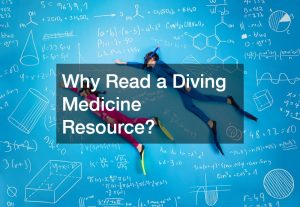Cancer is one of the leading causes of death in the world, and despite decades of research, scientists have yet to find a cure for it. However, thanks to modern technology, researchers and doctors are now able to use a variety of different tools to help treat cancer patients and improve their odds for survival. Here are ten different technologies that are helping to fight cancer and save lives.

1. Radiation therapy
During radiation treatment, X-rays or other forms of high-energy waves are used to destroy cancer cells and stop their growth. The technology is becoming increasingly precise as researchers find ways to target radiation more precisely to the tumor while sparing healthy tissue and organs.
2. Gene editing
Researchers are using gene-editing technology such as CRISPR to edit the genes in tumor cells and make them more vulnerable to attack from the immune system, radiation therapy, and other cancer treatments. This process is still experimental, but scientists are hopeful that it can be used to more effectively target and destroy cancer cells.
3. Immunotherapy
This type of treatment stimulates a patient’s own immune system to kill cancer cells or prevent them from growing. It’s an excellent alternative to harsh and sometimes harmful chemotherapy treatments, and it can also boost the effectiveness of radiation therapy while cutting recovery time in half for some patients.
4. Tumor-targeting vaccines and drugs
Drug development techniques such as computerized tomography (CT) scans allow scientists to study how tumors react to different drugs. By combining the results of several CT scans, researchers can use advanced algorithms and high-performance computers to create 3D models that show how chemotherapy drugs are likely to interact with tumors in the human body.
5. Artificial intelligence
Artificial intelligence (AI) can help doctors diagnose cancer earlier and more accurately than ever before. AI and machine learning can help identify signs of cancer and other diseases in patients by sorting through huge amounts of data and identifying patterns. For one, they found that specialized exercise can help increase the body’s immune response to cancer, making it more likely to be beaten with other treatments.
6. Wearable devices
These devices track your activity levels, sleep patterns, and other vital statistics like heart rate, breathing rates, and blood pressure to detect early warning signs of cancer or provide an extra layer of protection against the disease with preventative care options like digital breast exams for women or prostate exams for men.
7. Biopsies
A biopsy is a procedure in which tissue is removed from the body (usually by inserting a needle) so it can be examined under a microscope to look for abnormal cells beneath the surface of the skin, which could indicate a tumor. Biopsies have been done for years, but the latest biopsy technology is more efficient and less invasive, making it easier to remove tissue while causing less damage to surrounding nerves.
8. 3D printed prosthetic limbs
Not every cancer patient is an ideal candidate for a prosthetic limb, but with the help of new technologies like computer-assisted design (CAD) and 3D printing, doctors are able to outfit patients with custom-fit replacement limbs that look and feel more natural than ever before.
9. Portable PET scanners
Cancer patients often have to travel long distances to get a PET scan, which is the most effective way of diagnosing and monitoring cancer treatment. New portable PET scanners mean that doctors can conduct tests on-site at their own offices and offer more personalized care for each patient.
10. Low-dose CT scans
About 8 million CT scans are done each year in the United States, but many of them expose patients to a potentially dangerous level of radiation. New low-dose CT scanners use a fraction of the radiation dose while still offering high-resolution images that allow doctors to detect tumors more precisely than ever before.
Different kinds of technology are helping to beat cancer. Medical researchers and doctors are always looking for new and innovative ways to treat cancer, and thanks to modern technology, they now have access to a wide variety of tools that are helping to make significant progress in the fight against cancer. But treatments that are faster, more precise, and less harmful to the human body are currently being researched and developed, and some of these technologies are proving to be even more effective in combination. AI-assisted diagnosis and treatment, wearable biosensors that detect cancer earlier, gene editing techniques like CRISPR, 3D printed prosthetic limbs for children with limb differences or deformities, and low-dose CT scans are just a few examples of the ways that cancer research and technology can make an impact on the lives of people around the world.









